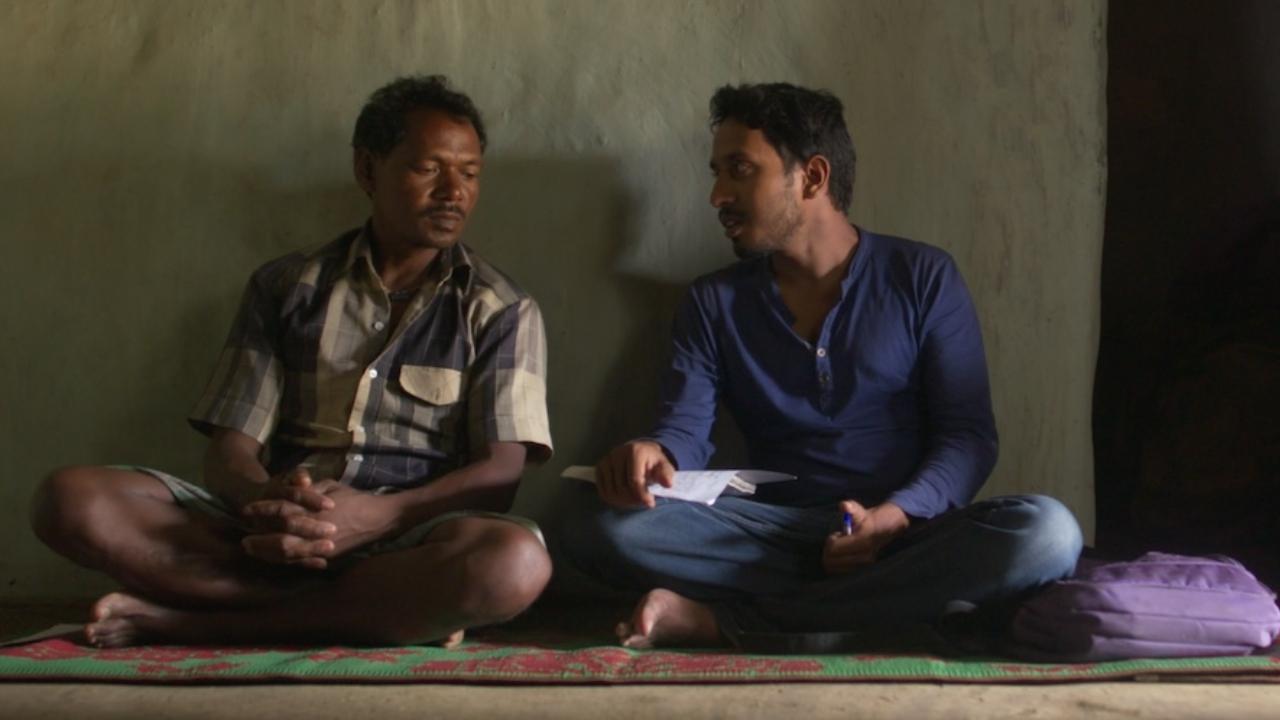'To Kill a Tiger' review: This documentary about a 13 year old girl who was gang-raped by three men,takes us through the many hurdles that Ranjit and his family had to undergo in order to secure justice for their underage daughter

Still from 'To Kill a Tiger'
Film: To Kill a Tiger
Cast: Ranji, Gender rights activists from Srijan NGO, Kapil Munda, Iswar Munda and Lungru Munda
Director: Nisha Pahuja
Rating:3.5/5
Runtime: 128 min.
ADVERTISEMENT
In an unprecedented and unheard of move, Ranjit, the father of a 13 year old gang-rape victim, takes on the village, community and satraps of Bera village, Jharkhand, as he demands justice for his daughter.
In India, ‘Rape’ happens every 18-20 minutes (Ref: World Population Review). Most cases in India go unreported, so the true magnitude of sexual crimes in India may never be known.
This documentary about a 13 year old girl who was gang-raped by three men, takes us through the many hurdles that Ranjit and his family had to undergo in order to secure justice for their underage daughter.
When they learnt about the rape the parents, (Ranit in particular) wanted to seek legal action but the village and the sarpanch advice them against it saying it would be better for their daughter if she was to be married off to one of the rapists as a compromise solution. When the Gender rights activists question them about this unjust choice, they opine that they are thinking in the long term. Six - seven years from now, the culprits would be released even if they were to be found guilty, and then it would be difficult for the girl and her family to live in the village without any security.
“Let us handle this.” “Why invite outsiders or police to resolve an issue which is mainly an issue to be dealt with by the village elders?” It was clear from the manner in which the rape was being dealt with at the village level, that the victim and her family had already been ostracised. The villagers were obviously not going to provide any protection and communication on all fronts had been withdrawn. Such is the moral code in rural India where patriarchy rules above all else.
The girl and her family with help from Srijan, a gender rights group, pursue the case and eventually succeed in getting the three rapists arrested and convicted. Given the legal processes, their fight is obviously not over. There’s an appeal hanging fire over the case and the future continues to be uncertain. Ranjit is adamant that he will educate his children and provide them with the best basis for a secure future. But will that be enough?
The villagers blamed the parents and the victim herself for bringing shame to the village. “ She had no business to stay out so late in the night when all others had left. ” Clearly, blaming the victim for having brought this on herself was much easier than facing up to the fact that the male of the species was not being educated to treat the opposite gender with respect. The Srijan activists understood this lacunae in their work with the community and have set out to redress this at least to some extent by discussing the patterns of behavior displayed following the rape.
In a country where patriarchy rules and men and women stand as one to protect male hegemony, it’s obviously rare to see a father take on the system to fight for his haplessly victimised daughter. As the film progresses Ranjit develops a better understanding of what it takes to support and protect his precious daughter.
Two things standout in this documentary - one is the acute loneliness (the othering) of the family fighting for justice and the other is the manner in which the victim is never given the opportunity to heal. The lack of psycho-social understanding comes out starkly. When the girl begins to cry she is told that she should not shed tears and be brave. The health delivery systems at the remote village levels are obviously not equipped to deal with such trauma.
Pahuja’s film unearths the many perspectives linked to this case in a tender and forthright manner. It puts into perspective the harrowing experience of having to forgo societal support when fighting for justice and also highlights the need for better equipped psycho-social services. This is not an artistic documentary by form but it’s a raw heartfelt one. The story itself is powerful enough to affect the viewer. We get to see both points of view. The parents and victim and that of the perpetrators and their kinsfolk. We hear competing viewpoints but it’s Ranjit’s refusal to accept the fate forced upon his daughter, and his daughter’s determination to stand up for herself, that gives the film its strength. This film basically holds a mirror to Indian society, questioning the lack of sensitivity towards gender linked violence.
 Subscribe today by clicking the link and stay updated with the latest news!" Click here!
Subscribe today by clicking the link and stay updated with the latest news!" Click here!








